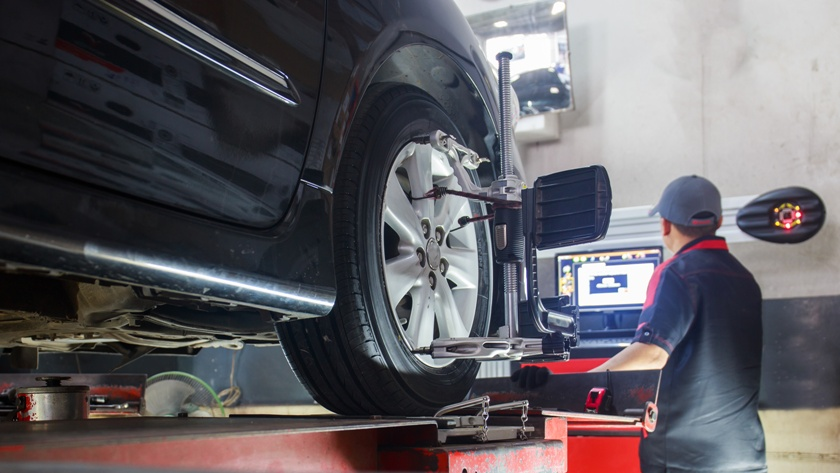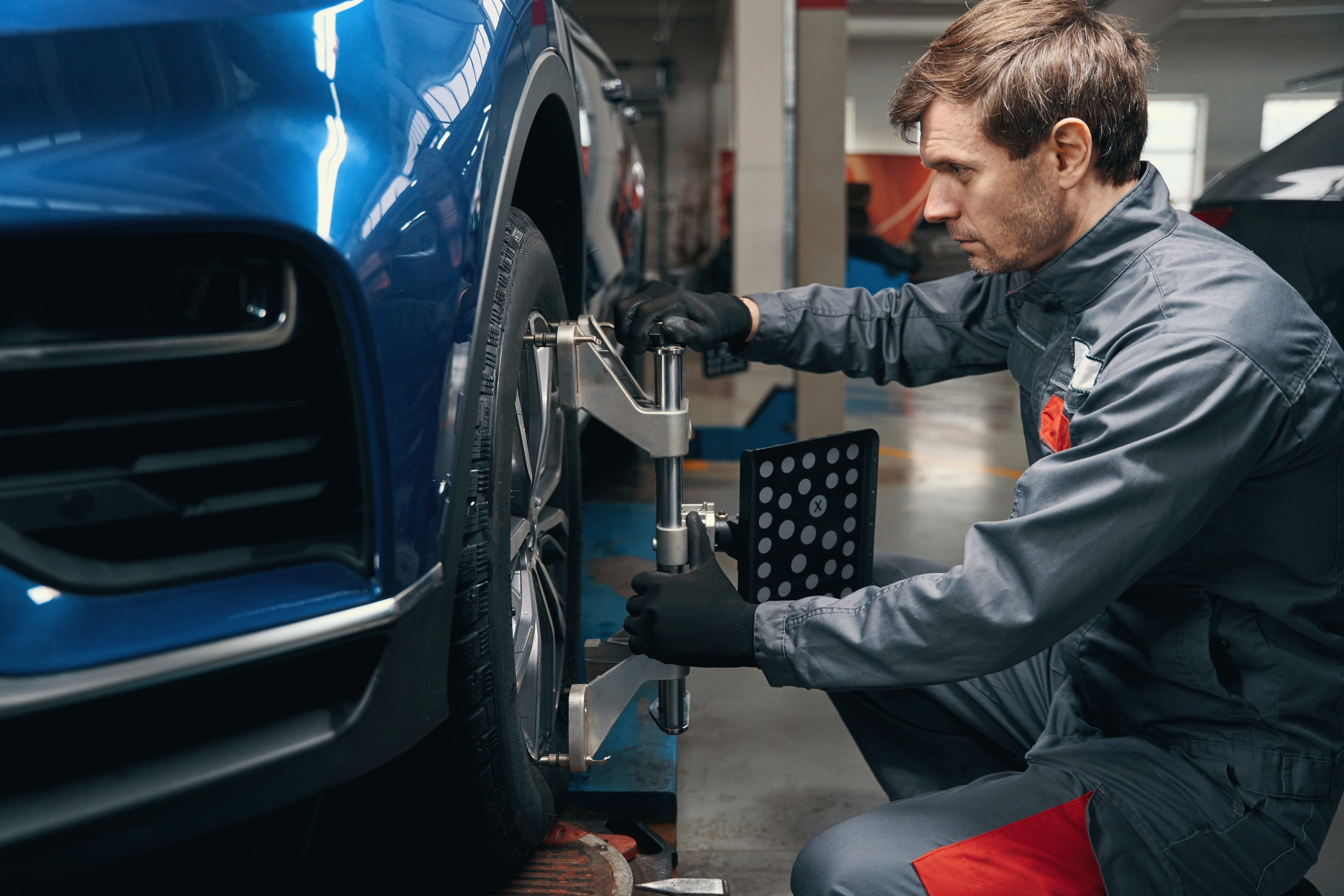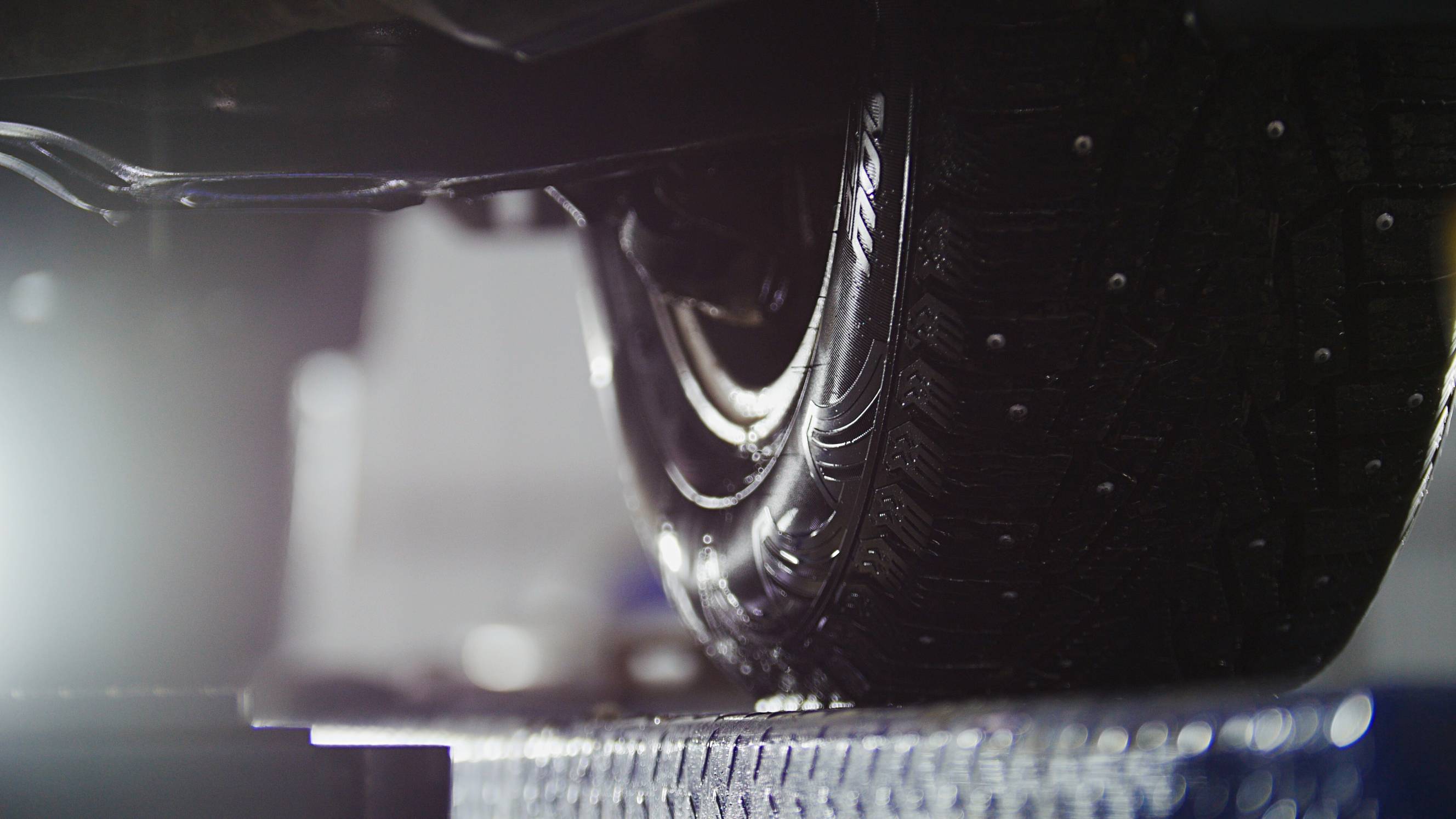- Home/
- Costs/
- Wheel Alignment/
- Wheel Alignment Inspection and Repair Cost Guide

Wheel alignment costs: What to expect and how to budget
Get a free quote nowPost to find a price. It's free and only takes a minute.
Price guide
$50 - $120
low
$50
median
$80
high
$120
Last Updated on
Key Facts
- Wheel alignment and repair costs vary, typically around $50 to $120. However, costs can increase further additional repairs, so budgeting for inspection and potential suspension work is wise.
- If the vehicle keeps pulling to one side with the steering wheel vibrating, these are the signs that it needs a wheel alignment.
- Wheel alignment typically requires a professional and is never recommended as a DIY job due to the precision and equipment involved.
Proper wheel alignment is important for better handling and control. It reduces the risk of accidents, keeping car rides safe. But since car tyres eventually wear out, the wheels start to misalign, causing the car to pull to one side and making the steering wheel more difficult to manage.
Realigning wheels can be costly, especially if it involves additional repairs. But the services are worth your money to help extend tyre life and avoid expensive wheel replacements. In this guide, we’ll learn more about how much wheel alignment and repair costs and what to expect when hiring this service.
What is wheel alignment and how does it work?
Wheel alignment refers to adjusting the angles of the wheels, ensuring proper contact with the road surface. This helps improve the vehicle's suspension, keeping a smooth car ride even when driving on uneven terrain. There are two wheel alignment types, namely,
- Front wheel alignment: Also known as a front-end alignment, this wheel service involves changing only your front two wheels. It's popular for Front-wheel drive (FWD) vehicles and older cars with a traditional rigid axle.
- Four-wheel alignment: Adjusts both the front and rear wheels of the vehicle; ideal for all vehicle types and drivetrain layouts.
When it comes to wheel alignment, mechanics and technicians often look at and address specific issues:
- Camber: It's the angle of your tyres when viewed from the front. Tilting too much in either direction means that re-alignment is required. Ignoring this can lead to worn-out suspension, ball joints, and worn bearings.
- Toe: It's the angle of your tyres when viewed from above. The front edges of your tyres could either move close together or ‘toe in’ or farther apart or ‘toe out’, requiring a wheel alignment.
- Caster: It's the angle of the ‘steering axis’ when looking at the side of the wheel. It’s responsible for keeping the vehicle stable and balanced, so it needs an alignment if it starts to tilt backwards or forward.
- Ride height: It's the distance between the vehicle's chassis and the ground. Typically adjusted by modifying sagging or worn-out suspension components like springs or shocks.
How much does wheel alignment cost in Australia?
Wheel alignment costs vary depending on the type of alignment required. As you might have guessed, four-wheel alignments are more expensive. The average for a small car is around $50, while larger vehicles are roughly $120. However, most experts advise budgeting no less than $120 if additional items need repair or replacement.
The type of vehicle can also affect pricing. Here’s a table showing the price difference between various types of cars for wheel alignment.
| Type of vehicle | Estimated costs |
|---|---|
2010 Ford Fiesta |
$40-$88 |
2016 Toyota RAV |
$40-$125 |
2012 Mazda 6 |
$69-$125 |
Remember also that there’s an additional labour cost to consider. Mechanics can ask for anything from $30 to $100 per hour and may base the price on an estimated hourly rate plus the materials costs.
 Digital systems help technicians assess and correct alignment with high precision. (Source: iStock)
Digital systems help technicians assess and correct alignment with high precision. (Source: iStock)
What factors affect the cost of a wheel alignment?
There are other issues that a mechanic will consider before they do an alignment. These include repairing steering and suspension components, as well as the ride height and suspension springs.
They may also inquire if you are interested in tyre balancing or other suspension repairs that can bump up the project’s cost labour in terms of labour and materials. For reference, the average suspension repair and replacement costs are between $44 and $93.
Signs you need a wheel alignment
Although you will require an expert’s opinion to ensure that any problems with a vehicle are due specifically to alignment issues, the most common signs that it is time for a wheel alignment are:
- The tread on one or more wheels is uneven or worn at odd angles.
- Your vehicle 'pulls' to one side or another rather than driving straight (a test is to lift the hands slightly from the wheel while traversing a straight road, and if the vehicle drifts instantly to one side or another, it is “pulling”)
- The steering wheel seems to vibrate when you are driving at speed.
- The steering wheel is off-centre when you are driving a straight stretch of road (i.e. the centre, upright post is tilted to one side)
- It has been more than six months, or 10,000 km, since you last had the alignment checked.
- You recently hit a pothole or curb, and the vehicle handles it differently.
An alignment is likely needed if one or more of these signs apply to your vehicle.
 Camber, toe, and caster adjustments are key parts of a complete wheel alignment process. (Source: iStock)
Camber, toe, and caster adjustments are key parts of a complete wheel alignment process. (Source: iStock)
Find a mechanic for wheel alignment at Airtasker
Whether you bring your vehicle to a garage or work with a provider of mobile services, any wheel alignment requires special equipment to be done properly. This is never a DIY job or one that can be done with the naked eye. It requires measurement with proper alignment devices, so a qualified professional must do it with the right machinery.
Look for trusted mechanics at Airtasker! You can connect with wheel alignment experts by simply posting a task. Just make sure to note down these things for Taskers to give an accurate and competitive offer:
- The time frame required (emergency, longer time available, etc.)
- Budget (the amount you have for the project)
- The make, model and age of the vehicle, along with notes about other issues you feel might affect the wheel alignment project.
- The materials and parts you will provide (and ask for a quote on them if you want to compare your options)
- If you require a warranty on labour (and materials if you don’t supply them)
- Your location (keep in mind that most wheel alignments are done in a garage to have use of the alignment and balancing machines)
Keep your car in tip-top condition with Airtasker.
Related articles
Related articles
